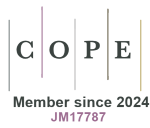Vulvodynia: when a training program to increase muscle mass in the lower limbs does some good!
DOI:
https://doi.org/10.33393/ao.2023.2633Keywords:
Biopsychosocial factors, Central sensitization, Chronic pain, Muscle mass, Pelvic floor dysfunction, Training program, Vulvar pain, VulvodyniaAbstract
Vulvodynia is a chronic pain condition, without clearly identifiable and visible causes, associated with disability, sexual disfunction, and impaired quality of life. It is frequently under-reported and under-diagnosed, resulting in significant emotional burden. The pathophysiology of vulvodynia is complex and multidimensional. According to the integrated biopsychosocial model, main triggers of vulvodynia may be biological (infectious or inflammatory conditions inducing severe or prolonged nociceptive or neuropathic pain, genetic predisposition, hormonal imbalance), psychological (depression, anxiety), sexual (traumatic experiences, unhealthy intimate relationship), and social (adverse childhood experiences). The diagnostic approach is based on accurate medical history exploring the characteristics and timing of vulvar pain, as well as the presence of other chronic pain conditions that are often comorbid. Pelvic examination (vulvar and vaginal appearance, cotton swab test for vulvar sensitivity, pelvic floor evaluation) supports the diagnosis and excludes secondary vulvar pain disorders. Considering that pain is a complex human experience within a multidimensional frame, the best therapeutic strategy should be multidisciplinary encompassing different therapeutic targets. Pharmacological therapies have anti-nociceptive, neuromodulating, and anti-inflammatory purposes and include both topical and systemic treatments (antidepressants, anticonvulsants, hormonal creams). Physical therapy consists of pelvic floor physiotherapy, electrostimulation, and neuromodulation techniques, while cognitive behavioral therapy, psychosexual intervention, and neurobiological education address the psychosocial dimension of vulvodynia. If results are insufficient, a surgical approach is allowed. We present a clinical case linking amelioration of vulvodynia to a training program to increase muscle mass, especially in the lower limbs, in a girl reporting an eating disorder.
References
- Torres-Cueco R, Nohales-Alfonso F. Vulvodynia—it is time to accept a new understanding from a neurobiological perspective. Int J Environ Res Public Health. 2021;18(12):6639. https://doi.org/10.3390/ijerph18126639 PMID:34205495 DOI: https://doi.org/10.3390/ijerph18126639
- Bornstein J, Goldstein AT, Stockdale CK, et al; Consensus vulvar pain terminology committee of the International Society for the Study of Vulvovaginal Disease (ISSVD), the International Society for the Study of Women’s Sexual Health (ISSWSH), and the International Pelvic Pain Society (IPPS). 2015 ISSVD, ISSWSH and IPPS consensus terminology and classification of persistent vulvar pain and vulvodynia. Obstet Gynecol. 2016;127(4):745-751. https://doi.org/10.1097/AOG.0000000000001359 PMID:27008217 DOI: https://doi.org/10.1097/AOG.0000000000001359
- Reed BD, Harlow SD, Sen A, Edwards RM, Chen D, Haefner HK. Relationship between vulvodynia and chronic comorbid pain conditions. Obstet Gynecol. 2012;120(1):145-151. https://doi.org/10.1097/AOG.0b013e31825957cf PMID:22914403 DOI: https://doi.org/10.1097/AOG.0b013e31825957cf
- Khandker M, Brady SS, Vitonis AF, Maclehose RF, Stewart EG, Harlow BL. The influence of depression and anxiety on risk of adult onset vulvodynia. J Womens Health (Larchmt). 2011;20(10):1445-1451. https://doi.org/10.1089/jwh.2010.2661 PMID:21823918 DOI: https://doi.org/10.1089/jwh.2010.2661
- Bergeron S, Reed BD, Wesselmann U, Bohm-Starke N. Vulvodynia. Nat Rev Dis Primers. 2020;6(1):36. https://doi.org/10.1038/s41572-020-0164-2 PMID:32355269 DOI: https://doi.org/10.1038/s41572-020-0164-2
- Bornstein J, Preti M, Simon JA, et al; International Society for the Study of Vulvovaginal Disease (ISSVD), the International Society for the Study of Womenʼs Sexual Health (ISSWSH), and the International Pelvic Pain Society (IPPS). Descriptors of vulvodynia: a multisocietal definition consensus (International Society for the Study of Vulvovaginal Disease, the International Society for the Study of Women Sexual Health, and the International Pelvic Pain Society). J Low Genit Tract Dis. 2019;23(2):161-163. https://doi.org/10.1097/LGT.0000000000000461 PMID:30768446 DOI: https://doi.org/10.1097/LGT.0000000000000461
- Nguyen RH, Turner RM, Rydell SA, Maclehose RF, Harlow BL. Perceived stereotyping and seeking care for chronic vulvar pain. Pain Med. 2013;14(10):1461-1467. https://doi.org/10.1111/pme.12151 PMID:23742116 DOI: https://doi.org/10.1111/pme.12151
- Harlow BL, Kunitz CG, Nguyen RH, Rydell SA, Turner RM, MacLehose RF. Prevalence of symptoms consistent with a diagnosis of vulvodynia: population-based estimates from 2 geographic regions. Am J Obstet Gynecol. 2014;210(1):40.e1-40.e8. https://doi.org/10.1016/j.ajog.2013.09.033 PMID:24080300 DOI: https://doi.org/10.1016/j.ajog.2013.09.033
- Harlow BL, Stewart EG. A population-based assessment of chronic unexplained vulvar pain: have we underestimated the prevalence of vulvodynia? J Am Med Womens Assoc (1972). 2003;58(2):82-88. PMID: 12744420.
- Vieira-Baptista P, Lima-Silva J, Cavaco-Gomes J, Beires J. Prevalence of vulvodynia and risk factors for the condition in Portugal. Int J Gynaecol Obstet. 2014;127(3):283-287. https://doi.org/10.1016/j.ijgo.2014.05.020 PMID:25092355 DOI: https://doi.org/10.1016/j.ijgo.2014.05.020
- Gómez I, Coronado PJ, Martín CM, Alonso R, Guisasola-Campa FJ. Study on the prevalence and factors associated to vulvodynia in Spain. Eur J Obstet Gynecol Reprod Biol. 2019;240:121-124. https://doi.org/10.1016/j.ejogrb.2019.06.005 PMID:31260857 DOI: https://doi.org/10.1016/j.ejogrb.2019.06.005
- Mitchell KR, Mercer CH, Ploubidis GB, et al. Sexual function in Britain: findings from the third National Survey of Sexual Attitudes and Lifestyles (Natsal-3). Lancet. 2013;382(9907):1817-1829. https://doi.org/10.1016/S0140-6736(13)62366-1 PMID:24286787 DOI: https://doi.org/10.1016/S0140-6736(13)62366-1
- Pathak D, Agrawal S, Dhali TK. Prevalences of and risk factors for vulvar diseases in Nepal: a hospital-based study. Int J Dermatol. 2011;50(2):161-167. https://doi.org/10.1111/j.1365-4632.2010.04631.x PMID:21244379 DOI: https://doi.org/10.1111/j.1365-4632.2010.04631.x
- Reed BD, Payne CM, Harlow SD, Legocki LJ, Haefner HK, Sen A. Urogenital symptoms and pain history as precursors of vulvodynia: a longitudinal study. J Womens Health (Larchmt). 2012;21(11):1139-1143. https://doi.org/10.1089/jwh.2012.3566 PMID:23134279 DOI: https://doi.org/10.1089/jwh.2012.3566
- Tympanidis P, Terenghi G, Dowd P. Increased innervation of the vulval vestibule in patients with vulvodynia. Br J Dermatol. 2003;148(5):1021-1027. https://doi.org/10.1046/j.1365-2133.2003.05308.x PMID:12786836 DOI: https://doi.org/10.1046/j.1365-2133.2003.05308.x
- Giesecke J, Reed BD, Haefner HK, Giesecke T, Clauw DJ, Gracely RH. Quantitative sensory testing in vulvodynia patients and increased peripheral pressure pain sensitivity. Obstet Gynecol. 2004;104(1):126-133. https://doi.org/10.1097/01.AOG.0000129238.49397.4e PMID:15229011 DOI: https://doi.org/10.1097/01.AOG.0000129238.49397.4e
- Hampson JP, Reed BD, Clauw DJ, et al. Augmented central pain processing in vulvodynia. J Pain. 2013;14(6):579-589. https://doi.org/10.1016/j.jpain.2013.01.767 PMID:23578957 DOI: https://doi.org/10.1016/j.jpain.2013.01.767
- Lev-Sagie A, Prus D, Linhares IM, Lavy Y, Ledger WJ, Witkin SS. Polymorphism in a gene coding for the inflammasome component NALP3 and recurrent vulvovaginal candidiasis in women with vulvar vestibulitis syndrome. Am J Obstet Gynecol. 2009;200(3):303.e1-303.e6. https://doi.org/10.1016/j.ajog.2008.10.039 PMID:19254587 DOI: https://doi.org/10.1016/j.ajog.2008.10.039
- Chalmers KJ, Madden VJ, Hutchinson MR, Moseley GL. Local and systemic inflammation in localized, provoked vestibulodynia: a systematic review. Obstet Gynecol. 2016;128(2):337-347. https://doi.org/10.1097/AOG.0000000000001510 PMID:27400010 DOI: https://doi.org/10.1097/AOG.0000000000001510
- Ting AY, Blacklock AD, Smith PG. Estrogen regulates vaginal sensory and autonomic nerve density in the rat. Biol Reprod. 2004;71(4):1397-1404. https://doi.org/10.1095/biolreprod.104.030023 PMID:15189832 DOI: https://doi.org/10.1095/biolreprod.104.030023
- Morin M, Binik YM, Bourbonnais D, Khalifé S, Ouellet S, Bergeron S. Heightened pelvic floor muscle tone and altered contractility in women with provoked vestibulodynia. J Sex Med. 2017;14(4):592-600. https://doi.org/10.1016/j.jsxm.2017.02.012 PMID:28364981 DOI: https://doi.org/10.1016/j.jsxm.2017.02.012
- Khandker M, Brady SS, Stewart EG, Harlow BL. Is chronic stress during childhood associated with adult-onset vulvodynia? J Womens Health (Larchmt). 2014;23(8):649-656. https://doi.org/10.1089/jwh.2013.4484 PMID:25046165 DOI: https://doi.org/10.1089/jwh.2013.4484
- Stenson AL. Vulvodynia: diagnosis and management. Obstet Gynecol Clin North Am. 2017;44(3):493-508. https://doi.org/10.1016/j.ogc.2017.05.008 PMID:28778645 DOI: https://doi.org/10.1016/j.ogc.2017.05.008
- Meister MR, Sutcliffe S, Ghetti C, et al. Development of a standardized, reproducible screening examination for assessment of pelvic floor myofascial pain. Am J Obstet Gynecol. 2019;220(3):255.e1-255.e9. https://doi.org/10.1016/j.ajog.2018.11.1106 PMID:30527941 DOI: https://doi.org/10.1016/j.ajog.2018.11.1106
- Santangelo G, Ruggiero G, Murina F, et al. Vulvodynia: a practical guide in treatment strategies. Int J Gynaecol Obstet. 2023;ijgo.14815. https://doi.org/10.1002/ijgo.14815 PMID:37154479 DOI: https://doi.org/10.1002/ijgo.14815
- De Andres J, Sanchis-Lopez N, Asensio-Samper JM, et al. Vulvodynia—an evidence-based literature review and proposed treatment algorithm. Pain Pract. 2016;16(2):204-236. https://doi.org/10.1111/papr.12274 PMID:25581081 DOI: https://doi.org/10.1111/papr.12274
- Miranda Varella Pereira G, Soriano Marcolino M, Silveira Nogueira Reis Z, Vale de Castro Monteiro M. A systematic review of drug treatment of vulvodynia: evidence of a strong placebo effect. BJOG. 2018;125(10):1216-1224. https://doi.org/10.1111/1471-0528.15223 PMID:29569822 DOI: https://doi.org/10.1111/1471-0528.15223
- Watson JA, Ryan CG, Cooper L, et al. Pain neuroscience education for adults with chronic musculoskeletal pain: a mixed-methods systematic review and meta-analysis. J Pain. 2019;20(10):1140.e1-1140.e22. https://doi.org/10.1016/j.jpain.2019.02.011 PMID:30831273 DOI: https://doi.org/10.1016/j.jpain.2019.02.011









